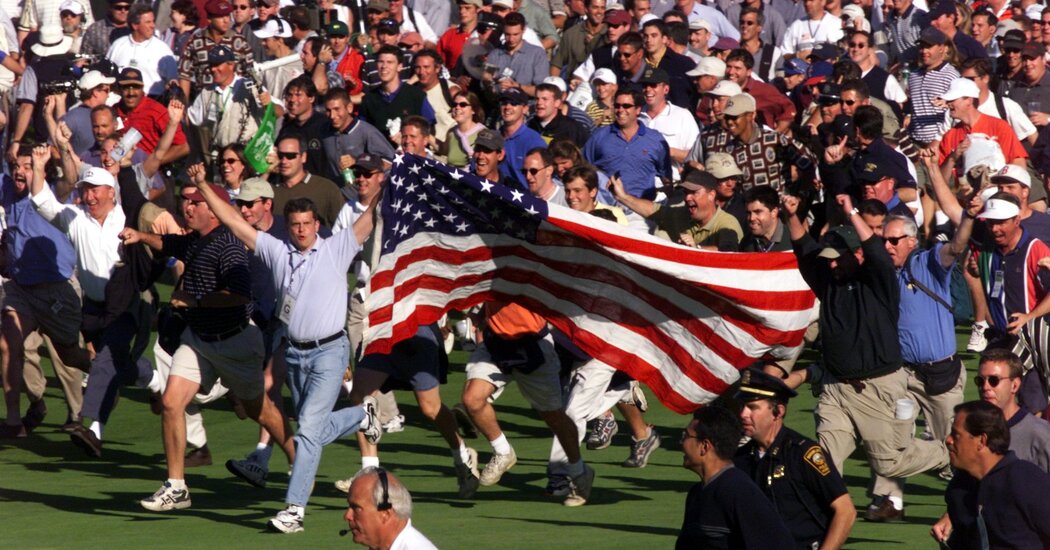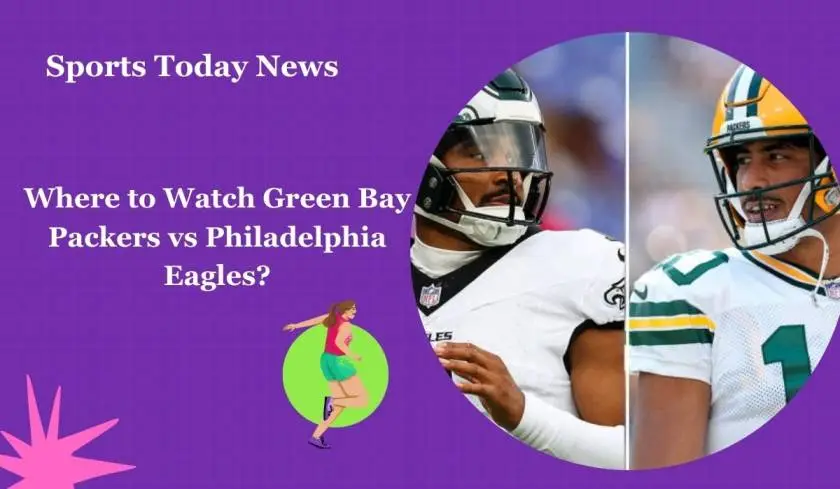
At the Ryder Cup, the Fans Are Part of the Show
The most un-golf golf tournament in the world brings camaraderie, rambunctiousness and world-class banter to a sport normally played in hushed tones.
At the Ryder Cup, fans are everything.
They bring excitement to the biennial match, which starts this week at Whistling Straits in Wisconsin on the Lake Michigan shoreline. But they also provide an energy that can swing a match or sway an entire day of competition. For three days, Ryder Cup fans make golf feel like football, shaking a normally staid sport and transforming a quiet golf course into a packed stadium.
Ben Crenshaw knows that power well. A four-time Ryder Cup player — and two-time Masters champion — he was captain of the 1999 U. S. team that mounted one of the greatest comebacks in the event’s history. Down four points heading into the final day, Crenshaw’s American squad rallied on Sunday at the Country Club in Brookline, Mass., to win by one point.
“The ebb and flow of the tenor of the crowd is an amazing thing to watch,” Crenshaw said. “Emotions can change very quickly. As a player you know what’s going on. You sort of sense it by instinct.”
That afternoon in 1999, the key shot was made by the American Justin Leonard who sank a 45-putt on the 17th hole at Brookline. The crowd erupted. “There was no one on the face of this planet who would have given Justin Leonard a chance to make that putt,” Crenshaw said. “Seeing it go in, it was like a lightening bolt. We lost our composure. We had to apologize for that. But it was just in the moment.”
The Ryder Cup, the most un-golf golf tournament in the world, brings camaraderie, rambunctiousness, singing, hollering and world-class banter to a sport normally played in hushed tones.
The question that concerns many people this year is, what will the Ryder Cup be like with the Delta variant surging and international travel a challenge? It’s going to be different for sure, but not so different as to be unrecognizable. For one, there will still be fans. Their importance was one reason the P.G.A. of America, which is the host of the event in the United States, did not try to stage the Ryder Cup last year without them.
“We held a P.G.A. Championship without fans [in 2020], but a Ryder Cup without fans isn’t a Ryder Cup in our view or anyone’s view,” said Seth Waugh, chief executive of the P.G.A. of America. “We were able to roll it ahead to get to this year when we could have a Ryder Cup with a full fan experience.”
Waugh said he was pleased that very few European fans had asked for refunds, even though the P.G.A. offered them no questions asked. He said he was hopeful there would be a robust European crowd at Whistling Straits.
Jubilant fans have always been a part of the competition. The first Ryder Cup was held in 1927 at Worcester Country Club in Massachusetts. Two of the great players of that time, Walter Hagen from the United States and Ted Ray from Britain were the captains.
Ray was well known in the Boston area: He and Harry Vardon, another great British golfer, had lost the 1913 U.S. Open in a playoff to Francis Ouimet, a 20-year-old amateur, at the Country Club in Brookline.
In that first Ryder Cup contest, the American side easily won, with 9½ points to Britain’s 2½ points. In defeat, Ray “heavily praised the crowds for being nonpartisan, his players were troubled by the many photographers,” according to the club’s history.
And so was born the Ryder Cup tradition of players trying to find their footing on foreign ground with a decided home-field advantage.
Before 1979, the United States had dominated the Ryder Cup. From that first match at Worcester in 1927 to 1977 when it was played at Royal Lytham & St. Annes in England, the Americans won 18 times to Britain and Ireland’s three, with one tie.
But starting in 1979, with the inclusion of European players, particularly Seve Ballesteros of Spain, the event drew greater fan support. Since then, Europe has won 11 times to the U.S. team’s eight wins (and one tie).
“I’m not sure if Seve was the catalyst for the Ryder Cup change, but once he was included it became competitive again,” said David Smith, an English professional golfer turned golf course developer. “It became fun. Now there’s an opportunity for both sides to win.”
This year’s European squad will include Ian Poulter, an English golfer ranked 49th in the world who has had an outsized influence on the Ryder Cup over six appearances. He has a record of 14 wins, six losses and two ties. (For comparison, Tiger Woods has a record of 13 wins, 21 losses, and three ties over eight appearances.)
“Ian Poulter’s trying to get the crowd charged up,” Smith said. “You don’t normally have people screaming and chanting when you’re teeing off on the first tee.”
If you were rooting for the European side in 1999, the American fans’ enthusiasm was over the top.
Davis Rowley, a real estate broker and a longtime Brookline member, volunteered as a marshal at the 1999 Ryder Cup and said he tried to keep the worst of the rowdiest fans in check.
“I was stationed on the 15th hole, which was the main entrance to the club,” he said. “I had four to six Boston College football players at my disposal. At one point, another marshal relayed that there were a couple of inebriated fellows on 15 tee that were heckling the heck out of Montie [Colin Montgomerie]. At my command, my boys went up and threw them out.”
But that control was lost when Leonard sank his putt. “The place exploded,” Rowley recalled. “There was just this roar that shook the course.”
The nature of fans is that the opposite side does not always agree. “Crenshaw at Brookline whipped the fans up,” said Andrew “Chubby” Chandler, a longtime agent for players on the European Tour. “It was a pretty unpleasant atmosphere. It was about as volatile an atmosphere as I’ve ever been to at a Ryder Cup.”
Crenshaw, for his part, doesn’t deny that he played to the crowds. “I plead guilty to exciting the fans,” he said. “I was going out in my cart, and I’d see a whole bunch of fans and I’d raise my hands. They’d acknowledge that. But it was much the same way as Seve was doing in Spain.”
That was the previous Ryder Cup at Spain’s Valderrama Golf Club in 1997. The Europeans won that contest by a point with Ballesteros as the team captain.
Playing in the Ryder Cup, particularly for first-time participants, is difficult. “The one thing rookies don’t realize and expect is how nervous they’re going to be,” Chandler said, noting the noise on the first tee. “They’ve all played in majors, and they’ll be more nervous than that. I could never imagine that Darren Clarke [a five-time Ryder Cup player] would be so nervous on the driving range and then go birdie the first three holes.”
Padraig Harrington, this year’s European captain, cited the need for experience in the selection of his team. “The older guys bring something, but the younger guys bring a huge amount of passion,” he said. “They light the fire in the team room for the old guys. You know the young guys can play. But you need those veterans as well. There’s an equilibrium point.”
Changes have been made to the course at Whistling Straits, like flattening steep mounds, widening carts paths and putting the concessions on an adjacent course that won’t be in use during the competition, to move people around more easily under Covid protocols, said Jason Mengel, director of the Ryder Cup. But what matters most this year is that fans will be there in person.
“People haven’t been able to root for their country in quite some time,” Waugh said. “The animal spirits are high.”








